A Radical-Ambiguous (Re-)Vision of America’s West
David Benjamin Sherry’s Eco-Queer Critique of America’s Changing National Parks in his Photo Series Climate Vortex Sutra (2014)
1_Introduction
How can climate change be understood and imagined in contemporary art photography from a queer point of view? [1] In the following, I want to answer this question by delving into the artistic practice of the American photographer David Benjamin Sherry. Through my eco-queer reading [2] of his series Climate Vortex Sutra (2014), I want to find out to what extent it deals not only with questions of climate change but also with the heteronormative history of American landscape photography. Queer theory, as I define it, is a post-identitarian mode of thinking and articulating difference (such as gender and sexuality), which underlines the transformative moments of representation and investigates the dynamic interplay of power and desire in social and cultural relations. [3] Queer ecology brings together ecological theory with insights from feminist philosophy, gender studies, ecofeminism, and queer theory to question our understanding of sexuality in relation to ‘nature’ — especially the illusion of naturalized heteronormativity. [4]
In the exhibition Climate Vortex Sutra, shown in 2014 at Salon 94 Bowery in New York, photographs of various subjects, formats, and colors were hung crosswise on four white gallery walls (Fig. 1). Within one display, consisting of seven photographs, there are several narratives at which I would like to take a closer look, one of which consists of four landscape photographs and one nude photograph (Fig. 2).
While the purple photograph Cybernetic Water Witch was taken in the west of Wyoming, south of the Yellowstone National Park, in the Grand Teton National Park (Fig. 3), the purple and blue photograph Cold-Core Lows in the Polar Vortex was shot in Many Glacier, an area within Glacier National Park, located north of the Goung-to-the-Sun Road (Fig. 4). The blue photograph Deep Blue Sea Rising depicts the Wizard Island, an island at the west end of Crater Lake in Oregon’s Crater Lake National Park (Fig. 5). Last but not least, there is the black-and-white photograph Gates of Wrath (Summer of Fire), which gives an unusually wide and clear view through the ‘ruins’ of a forest landscape in Wyoming (Fig. 6). In the immediate vicinity of these four landscape photographs hangs the nude photograph Sympathetic Flesh (David), a self-portrait of the photographer David Benjamin Sherry, depicting a rainbow-colored male subject positioned floating in front of a black background (Fig. 7).
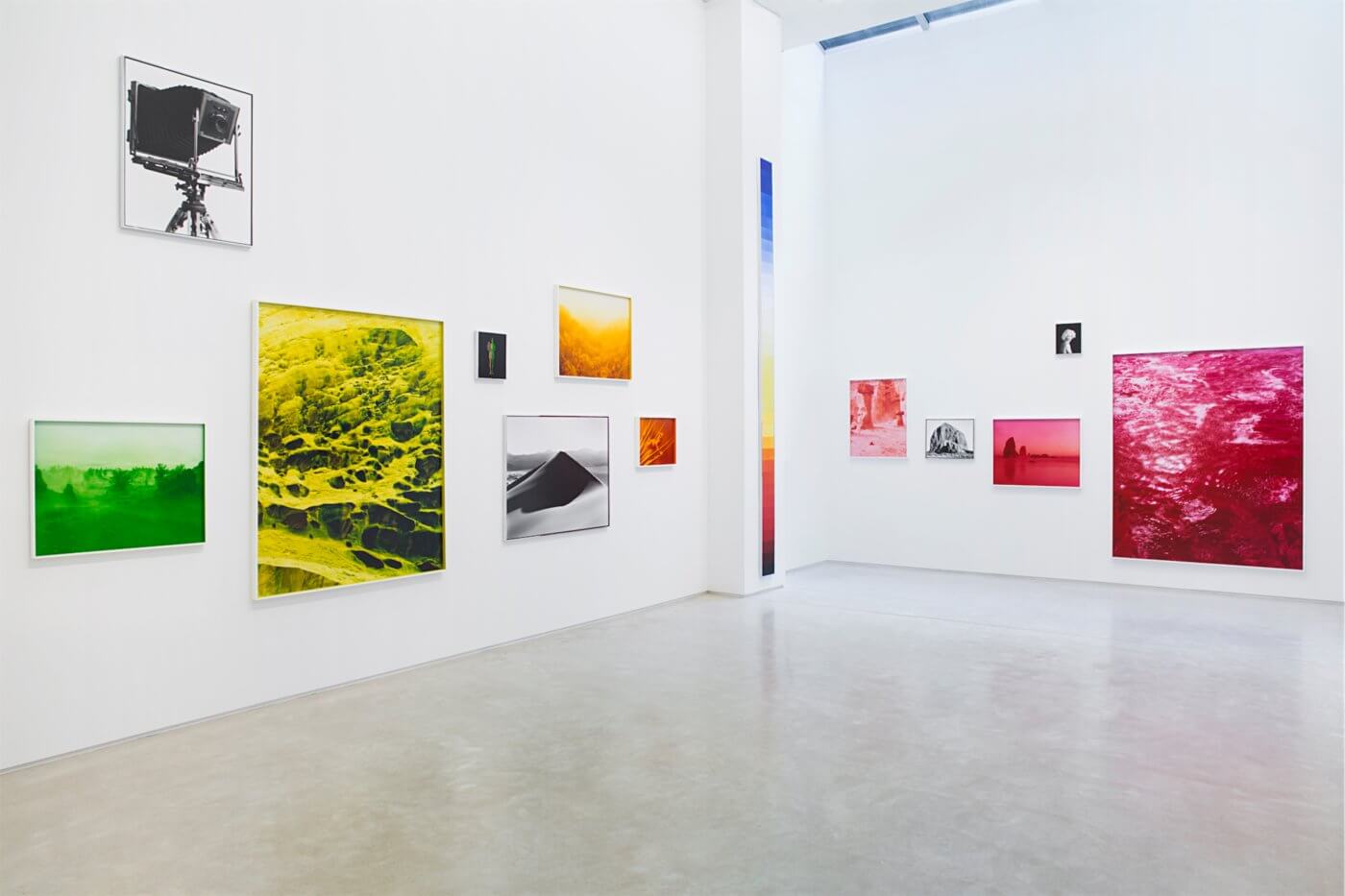
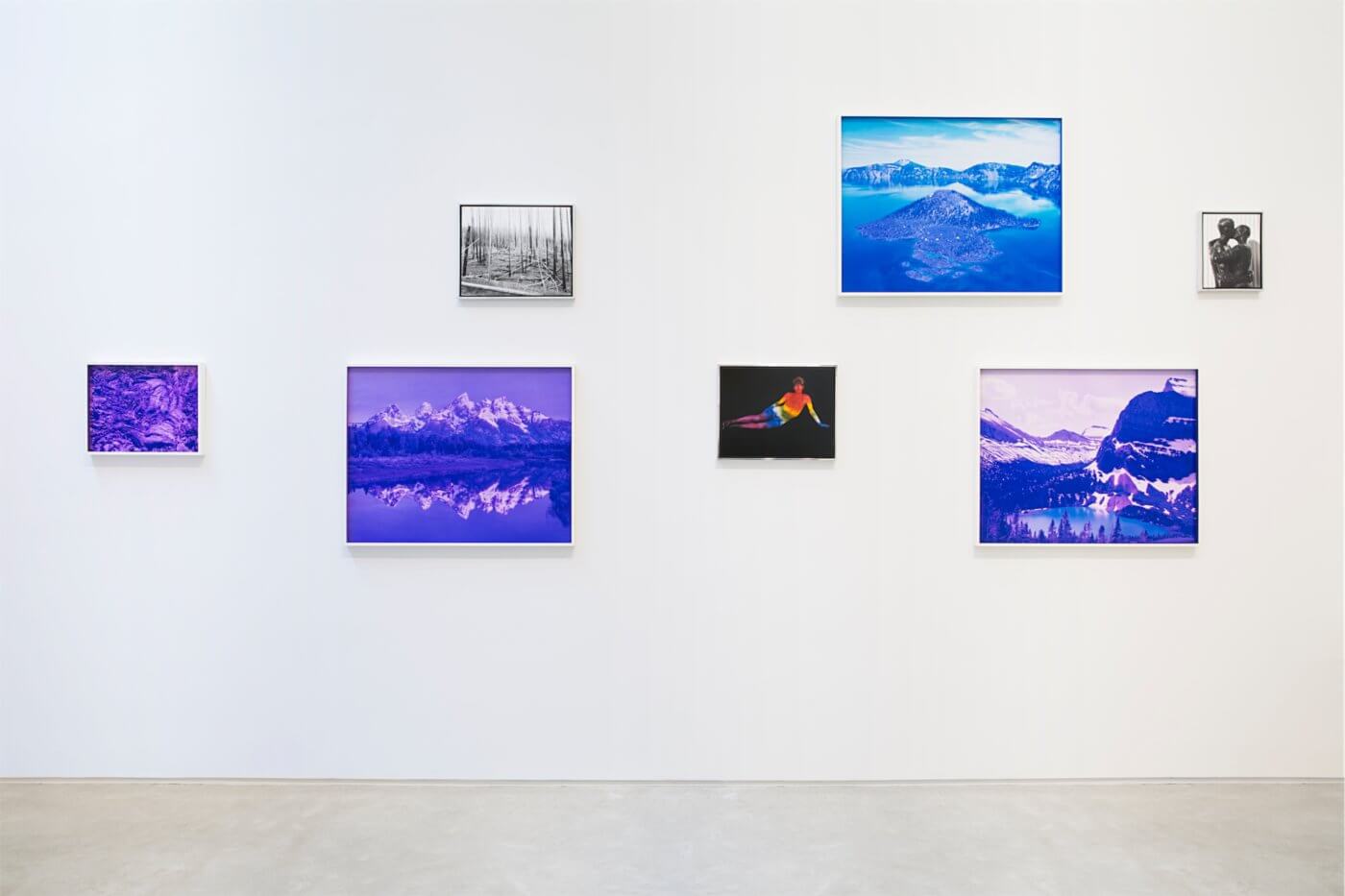
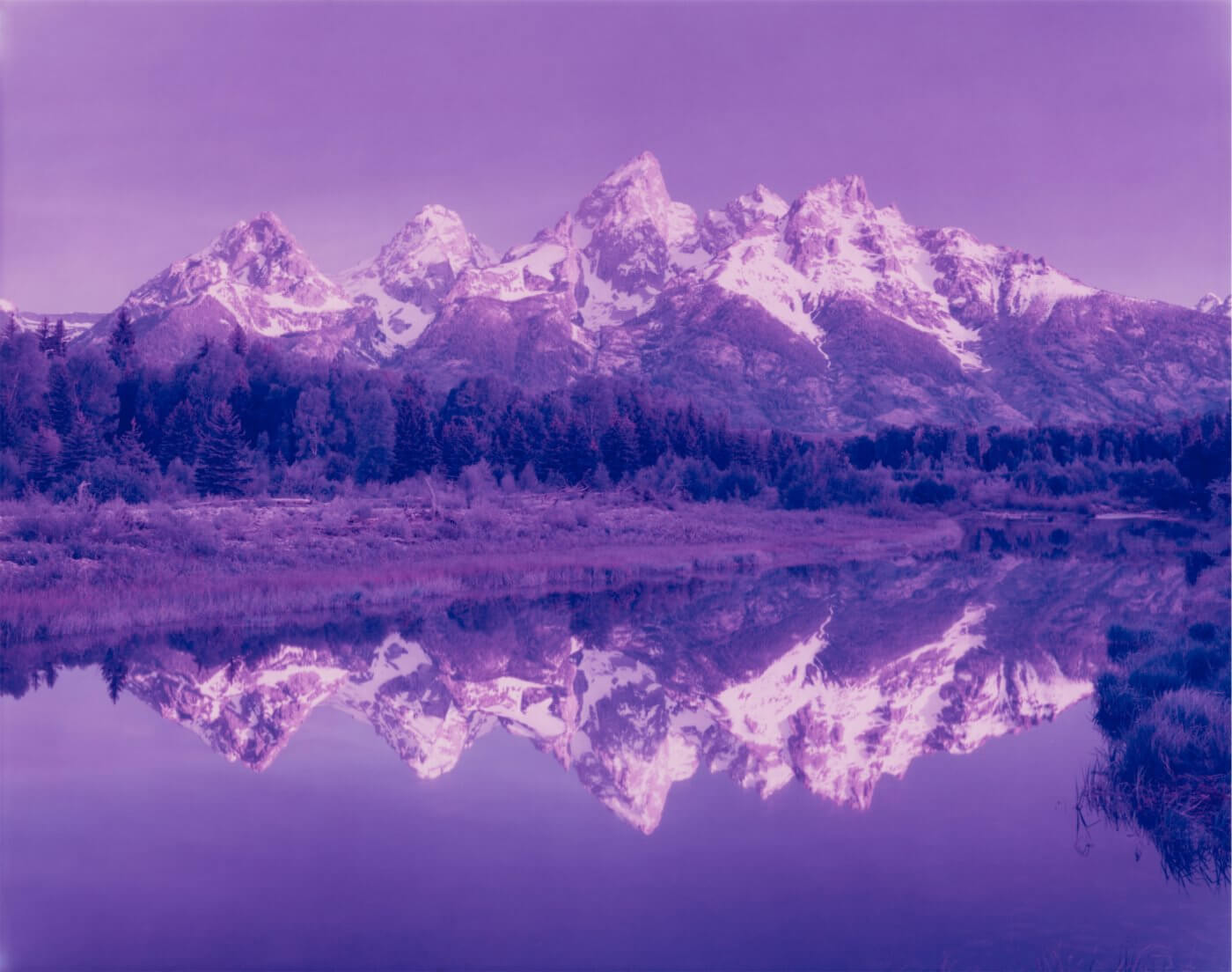
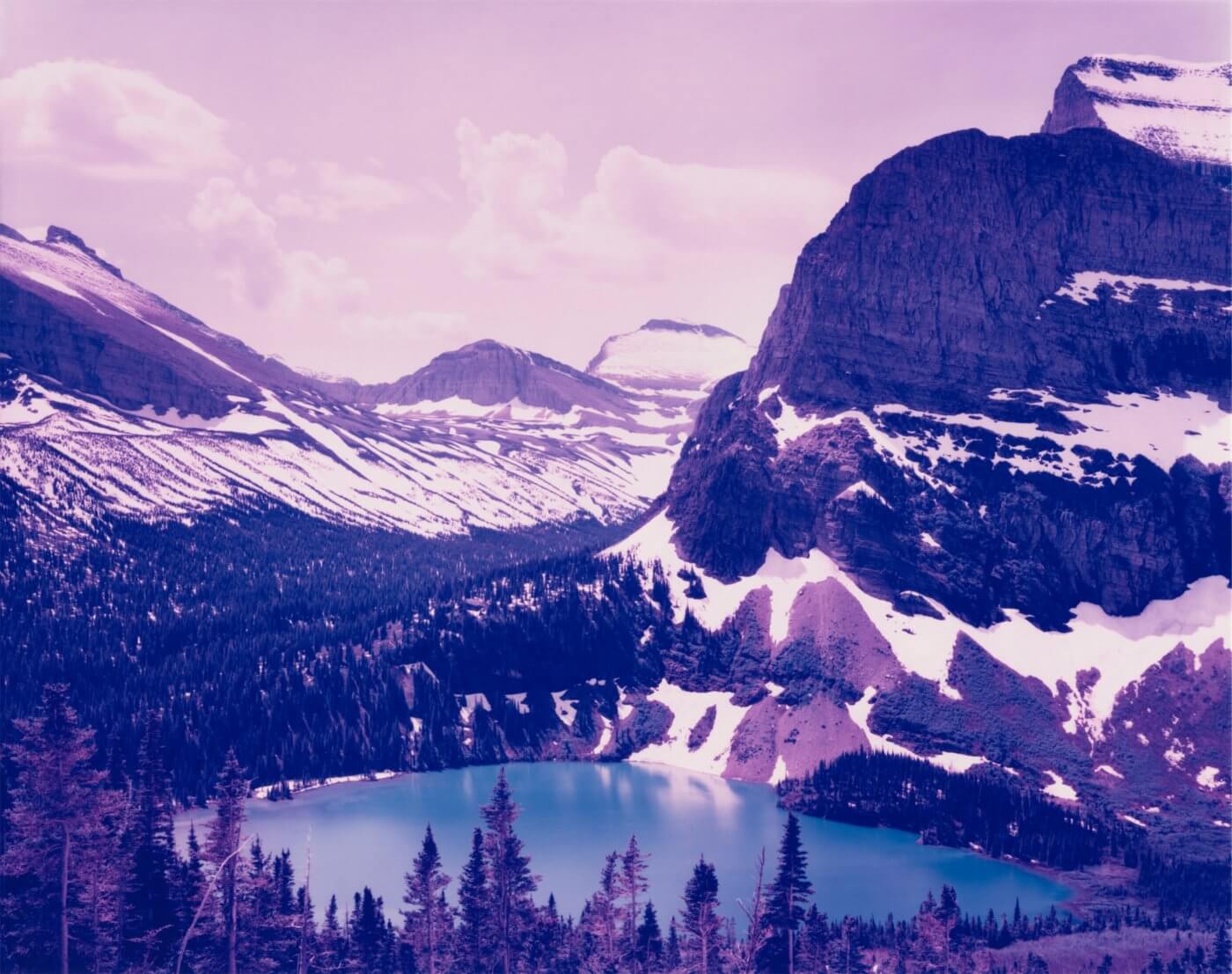
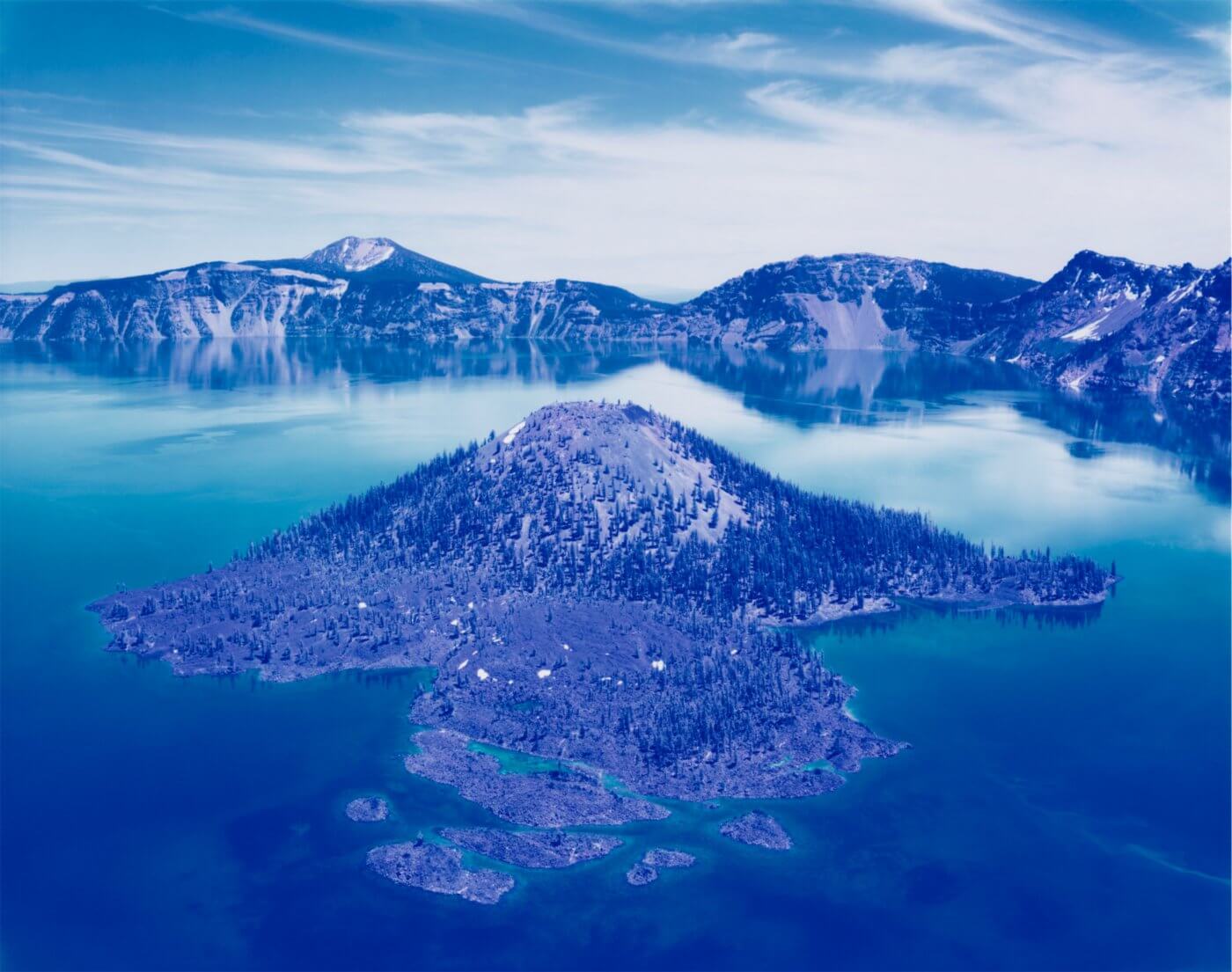
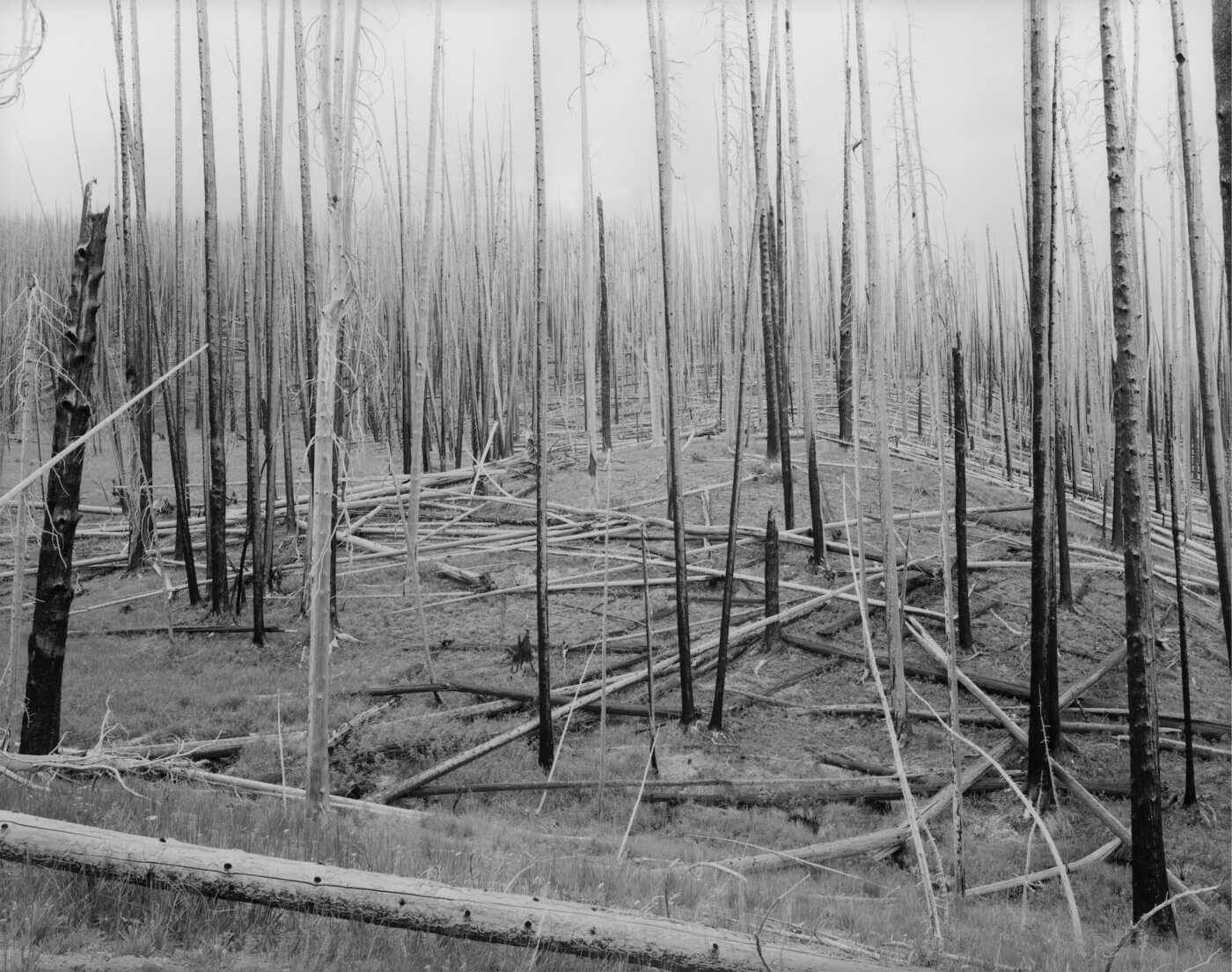
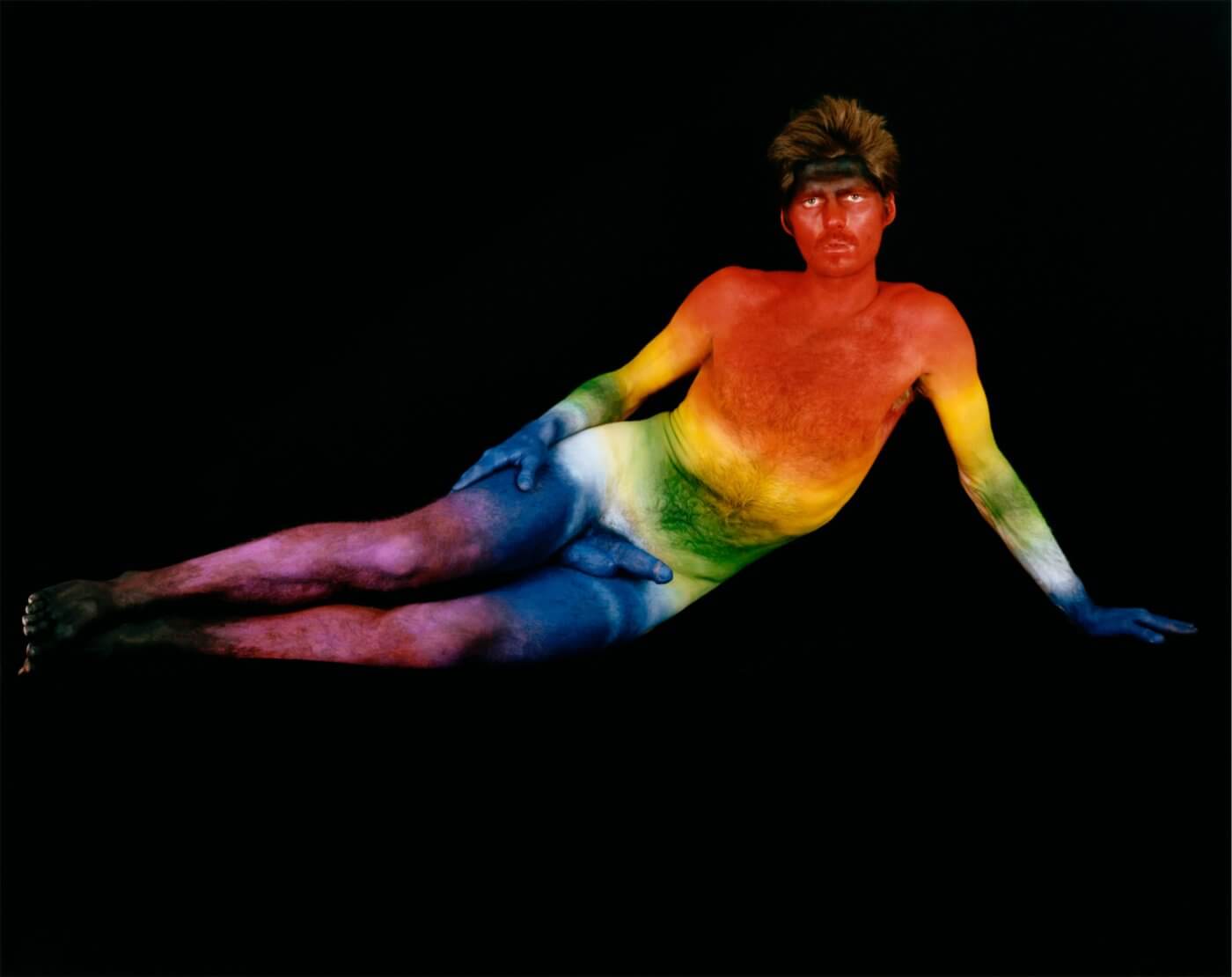
All five photographs are part of Sherry’s series Climate Vortex Sutra (2014), which consists of 31 photographs depicting a wide spectrum of motifs (Fig. 8): Besides portraits of human beings and animals, most of the photographs depict geological phenomena such as rock formations, jagged cliffs, sand dunes, undulating desert, and placid mountain landscapes in various national parks in the American West. Sherry always uses a large-format traditional handmade wooden camera (Fig. 9), which was admired by classic photographers like Edward Weston or Ansel Adams. Even though Sherry seems to follow in their footsteps with his analogue technique he adds his own signature. He re-creates common visions of the American West as otherworldly, supersaturated monochromes by filtering his 8/10-inch negatives in the darkroom through 150 varying degrees, respectively of cyan, magenta, and yellow.
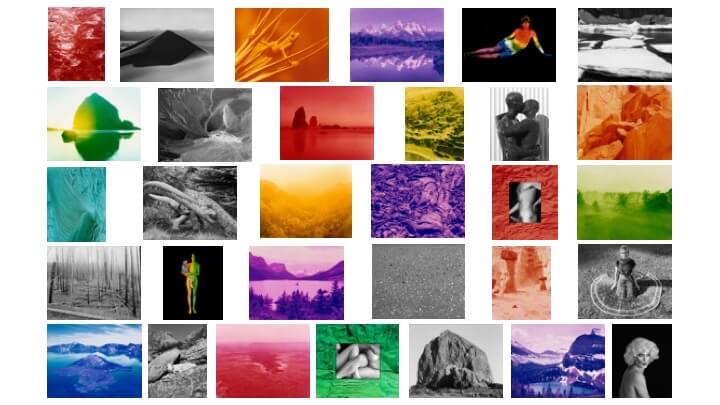

2_Short Excursion: The Colonial and Heteronormative History of American Landscape Photography
Sherry’s motifs of the American West remind us of 19th and 20th century landscape photography à la Ansel Adams and Edward Weston. At this point, an exemplary comparison between Yosemite Valley (1934) by Ansel Adams (Fig. 10) and Winter Sunrise over Yosemite Valley (2013) by David Benjamin Sherry (Fig. 11) will suffice to illustrate that by shooting the same vista as Ansel Adams did — Yosemite Valley and other locations of today’s national parks of the American West — Sherry re-calls formal characteristics of classic photography of the American West. As I will explain throughout this essay with Climate Vortex Sutra (2014), Sherry manages to escape the romantic clichés of the West that have been repeatedly photographed by amateurs and professional alike.
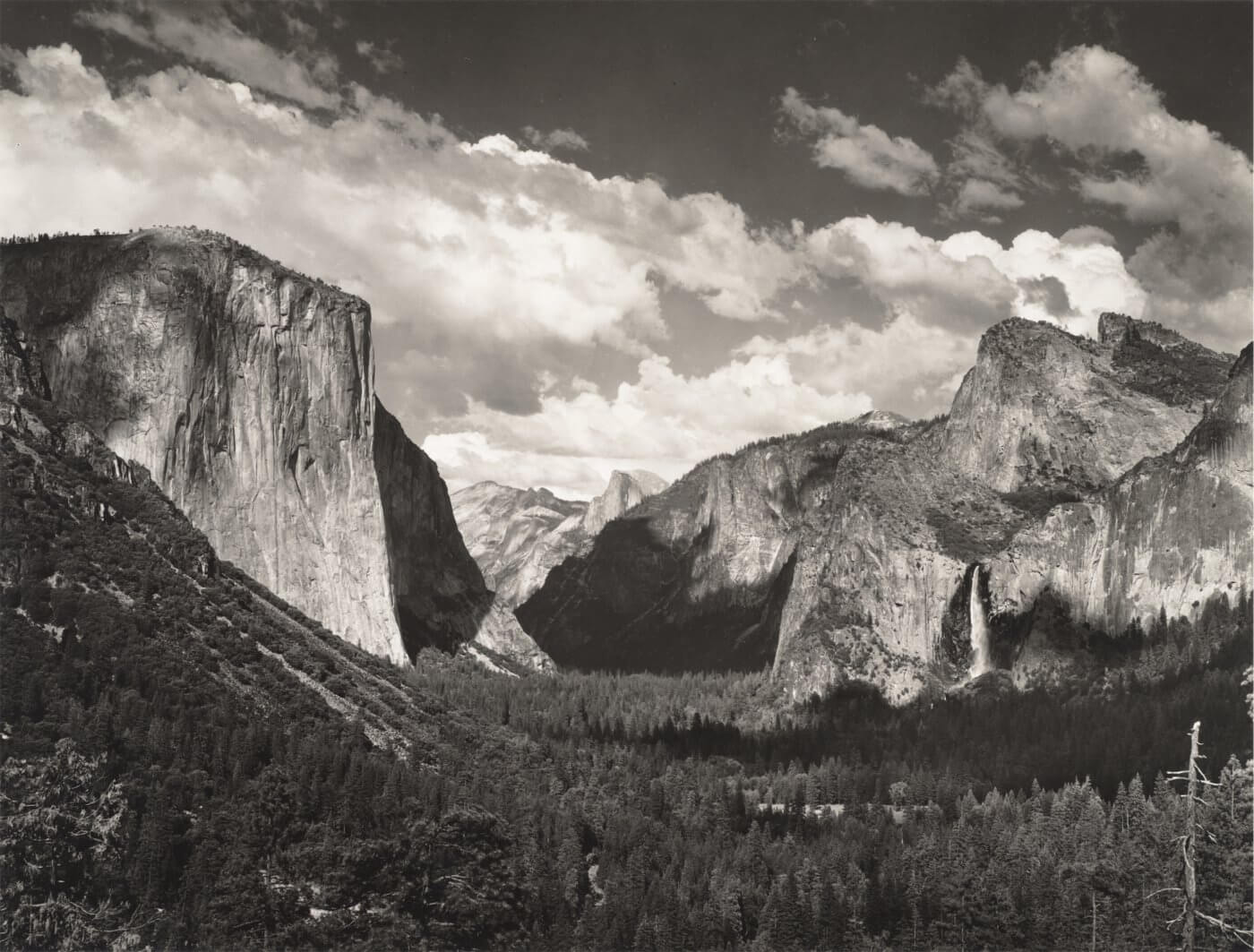
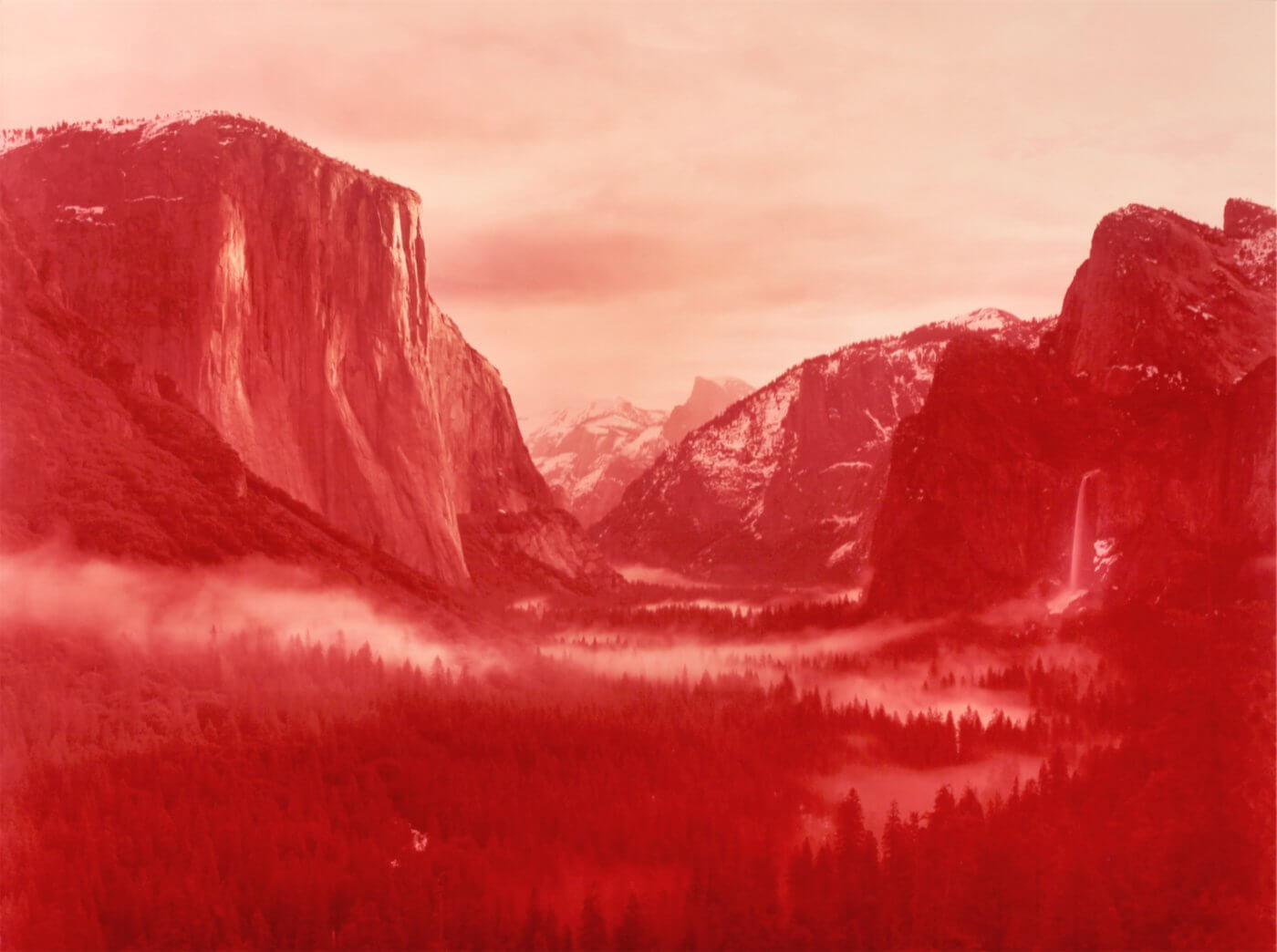
A critical examination of US-American historiography helps me reveal not only that sexism and racism can be systemic forms of oppression that negatively influence human beings’ relationships with the natural world, but also that ideas and institutions of nature can be important sites in which sexism and racism are organized. [5]
Even though there is a long history dating back to before classical times that proposed certain natural places as special or sacred, the genre of landscape [6] painting first appeared between the 17th and 19th century [7] in a moment of time when attitudes towards ‘wilderness,’ [8] the land, and the functions of art changed. [9] In the US, 19th century artists such as Albert Bierstadt, Thomas Cole, and Asher B. Durand were painting the American landscape as a visual expression of their religious conviction and as a demonstration of the principles of their Manifest Destiny — the widely held belief that American settlers, guided by a divine hand, were destined to conquer the entire continent. [10] In doing so, artists back then depicted the natural environment both as tangible manifestations of the existence of God and as idealized pastoral settings where humans and nature could coexist in harmony.
American landscape painters of the Hudson River School helped create a national identity in the still young United States of the mid-nineteenth century. [11] Due to the widespread popularity of landscape imagery, by the beginning of the 19th century photographic landscapes began to flourish and ‘wilderness’ — an American idea and a key element in the myth of the nation — acquired its modern, transcendental associations. [12] The Wild West, a fertile subject for photographers since the development of the medium, was in fact America’s first colony. [13] It was perceived as a source of raw materials. This means that ‘nature’ back then was nothing more than a commodity to be bought or stolen and sold. It was a ‘place’ that — through the extermination or relocation of the native peoples [14] — had to be violently ‘naturalized’ for America to transform itself from a colony into a colonial power. Just by looking at early photographs of the West it is hard to find visual clues for this violence concealed beneath the desert landscape. Instead, the concepts of the ‘sublime’ (depictions of formless and uplifting spectacles that produces feelings of awe and terror) and the ‘picturesque’ (depictions of well-formed serene scenery that produces feelings of pleasure) acted as instrumental and complicit modes because they were employed to advance ‘these processes’ by rendering the land ‘settable’ in photography and in reality. [15] Therefore, most of the 19th century American ‘landscape’ and ‘wilderness’ photography seems to be a modernist — particularly white, heterosexual, and cis-male — continuation of the Romantic traditions of Western landscape painting. [16]
3_Strategically Using Queer as a Mode of Politicized Estrangement of the Familiar
Against this background of the ethno-, andro-, and hetero-centric history of American landscape photography, my point is that even though Sherry seems to freely adopt the emotional reserve of nineteenth-century landscape painting and photography to provide historical context, credibility, and emotional resonance to his images, the stories he tells are different. In an interview, the photographer stresses that he is interested in the inclusion of queer visions within the US-American landscape tradition:
As a queer person, I felt an absence and void in this rich yet narrow photographic history and that a queer person’s point of view needs to be created and considered. I’m interested in developing my own queer history in this and other genres of photography and I have been attempting to enter the eye of this historical storm to not only recreate some of these famous photographs, but also bring forth new photographs that I hope to raise questions about the subject of photographic history, ask questions about the lack of queer vision within the history of photography while also celebrating mysticism, beauty and natural wonder that still is present in the American West. [17]
Instead of perpetuating a distance typical for 19th century American landscape painting and photography, in Climate Vortex Sutra, Sherry employs dominant nature discourses by using the example of national parks in America’s West in the service of queer possibilities. Sherry uses queer as a mode of politicized estrangement of the familiar. [18] He does so not only by adding hyper-saturated colors and titles with climate change references but also by juxtaposing photographs of national parks and photographs of human and non-human beings.
The hyper-detailed, hyper-saturated, and artificial colors are not only reminiscent of the 8-color rainbow flag, an internationally recognized symbol of LGBT+ [19] pride by Gilbert Baker and social movements since 1978, they also influence our perception of the photographs by forcing us to see differently something we ‘know’ — the conventional aesthetic of the American West. Therefore, the chromatic extremes of Sherry’s use of film and analogue printing are an act of transformation and denaturalization: ‘Nature’ is revealed as a product of our imagination, as something that is made and constructed.
In addition, the vibrant colors together with the titles seems to act as kind of cautiously raised index finger. Most of the titles of the photographs hold references which can be linked to climate change: geothermal & earth explosion (Fig. 12), global warming (Fig. 13), forest fires (Fig. 6), climate & vortex (Fig. 14), dry spells (Fig. 15), cold-core lows and polar vortex (Fig. 4), sea level rise (Fig. 5), ocean acidification (Fig. 16), earthquake (Fig. 17), the Anthropocene (Fig. 18), and amphibian crisis (Fig. 19). Taking these references into consideration, the subsequent coloring seems to also be a tool to dramatize the devastating consequences of climate change and environmental destruction in national parks in America’s West. However, rather than an authoritarian warning, Climate Vortex Sutra can be interpreted more as a quiet protest. Instead of dominant environmental imaginaries of crisis and potency, the photographs present existing and further emerging crises, such as global warming and ocean acidification, which are mentioned in the titles of the photographs. By capturing the irreversible evolution of America’s Western national parks, it becomes clear that these landscapes are silently suffering from climate change.
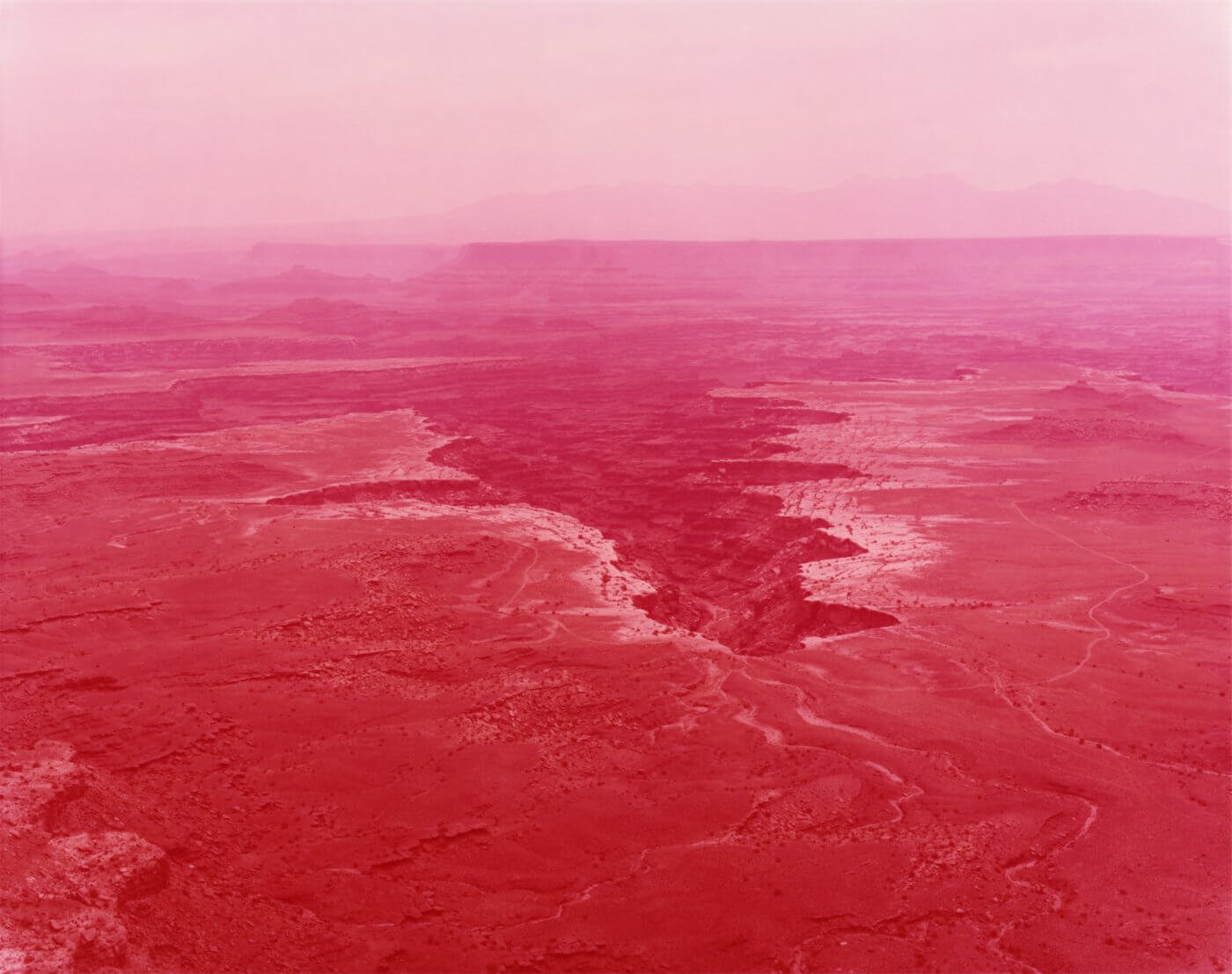
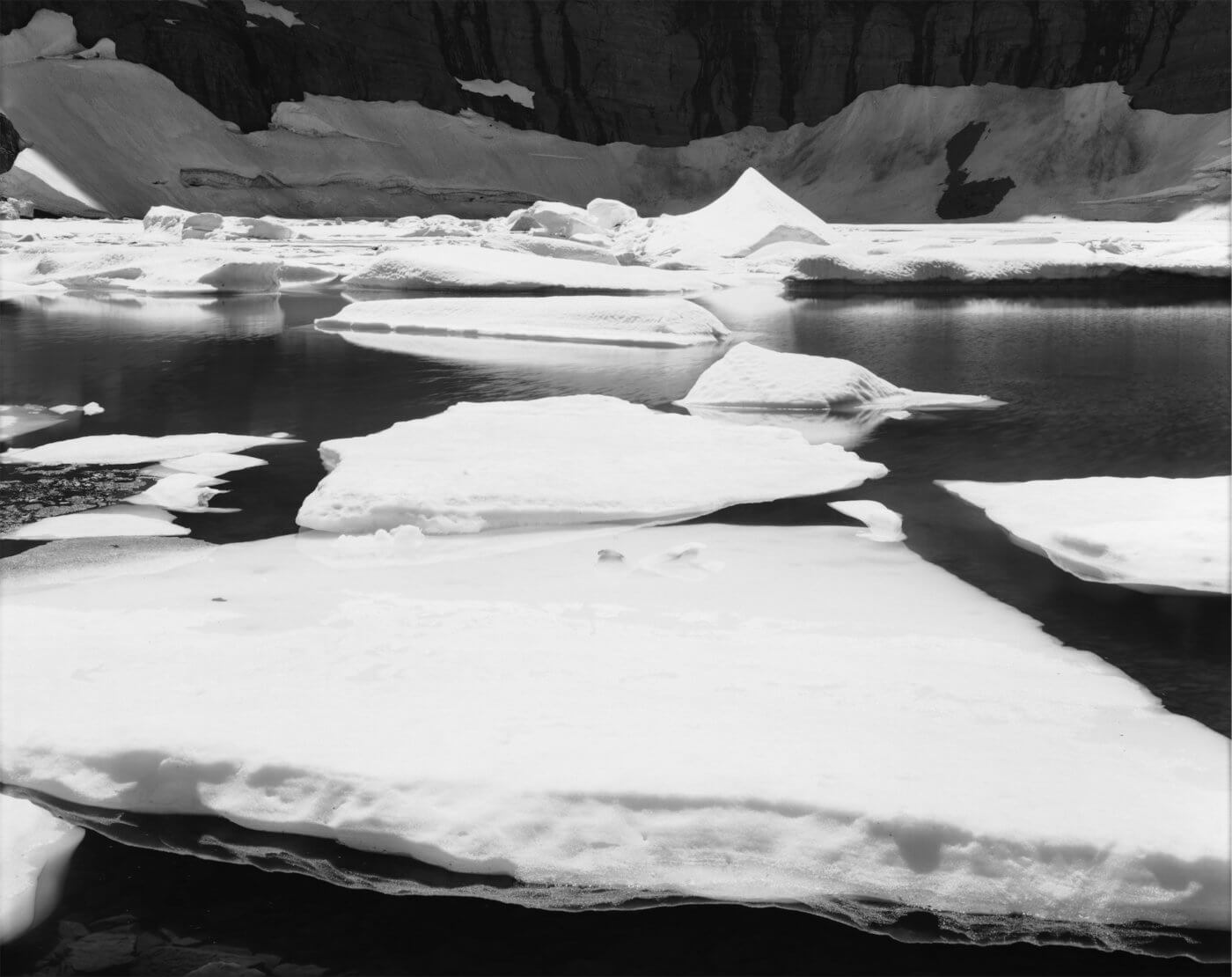
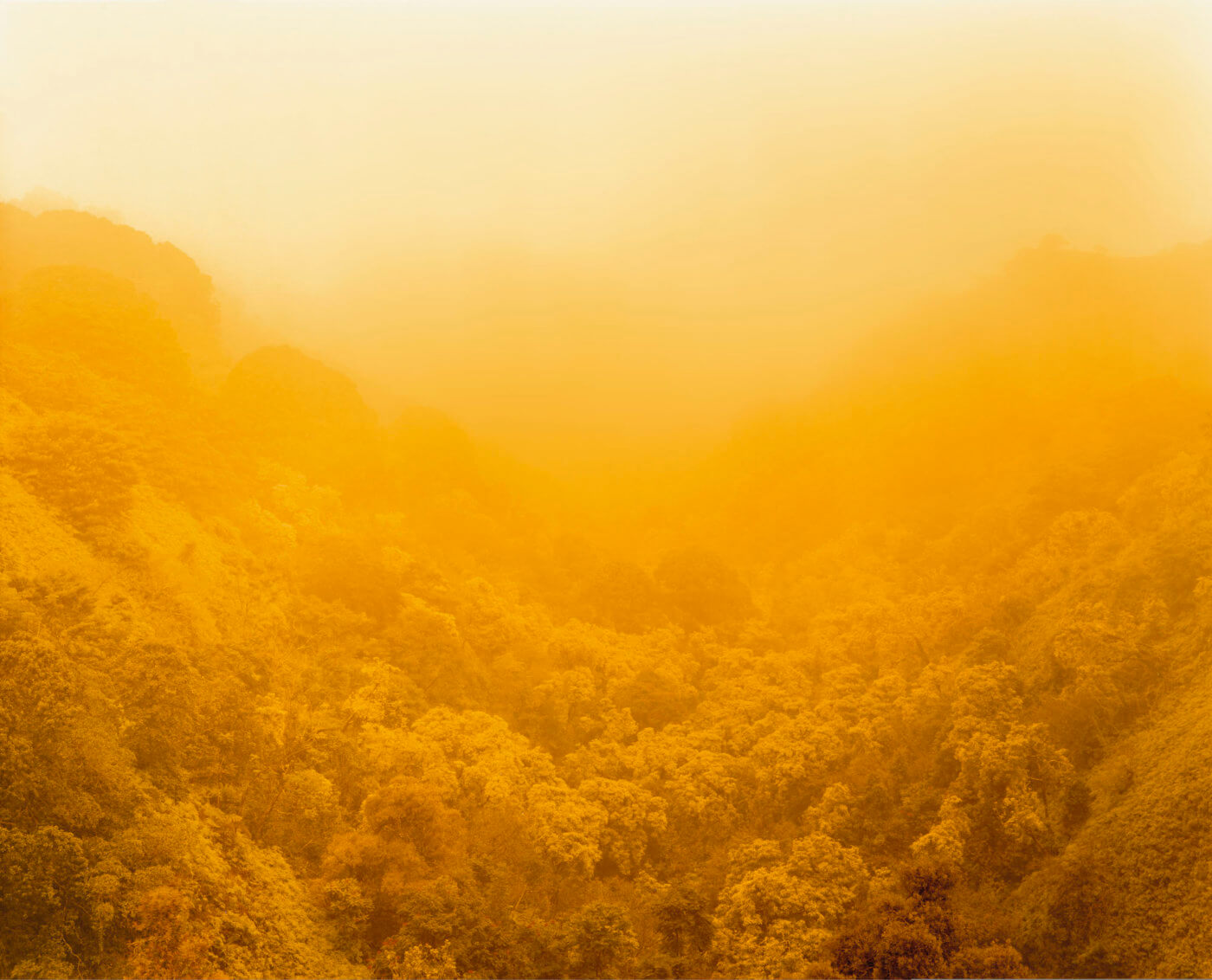
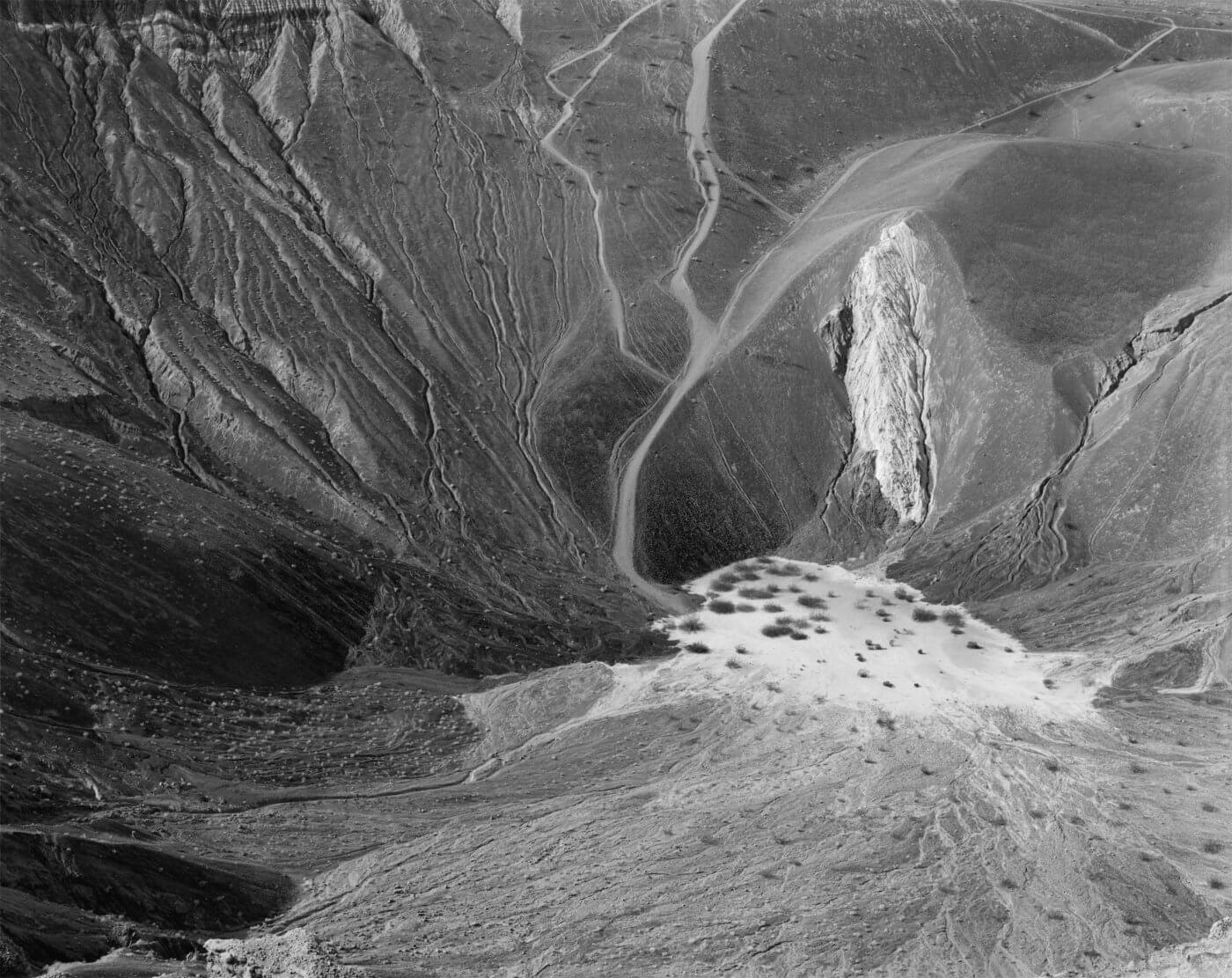
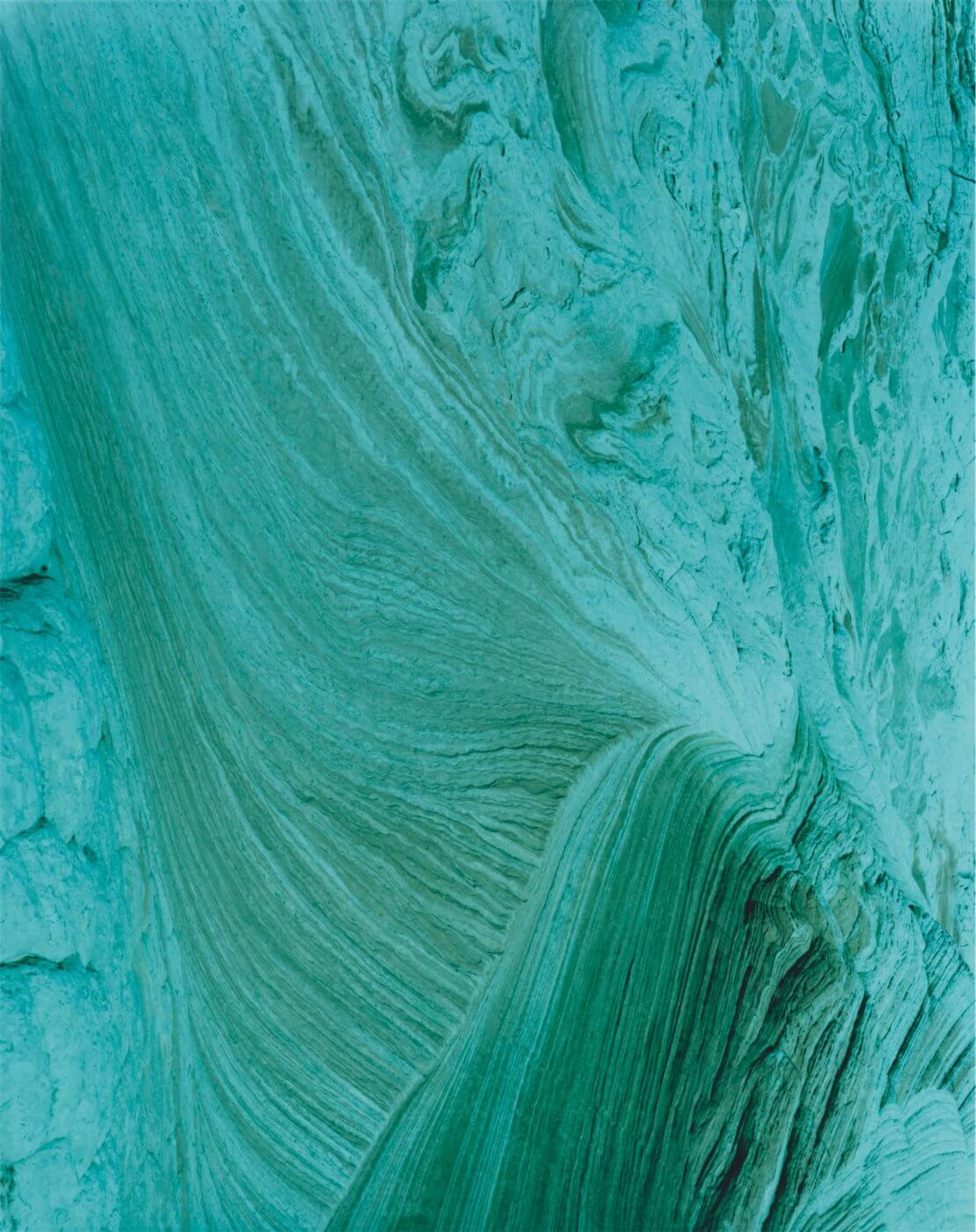
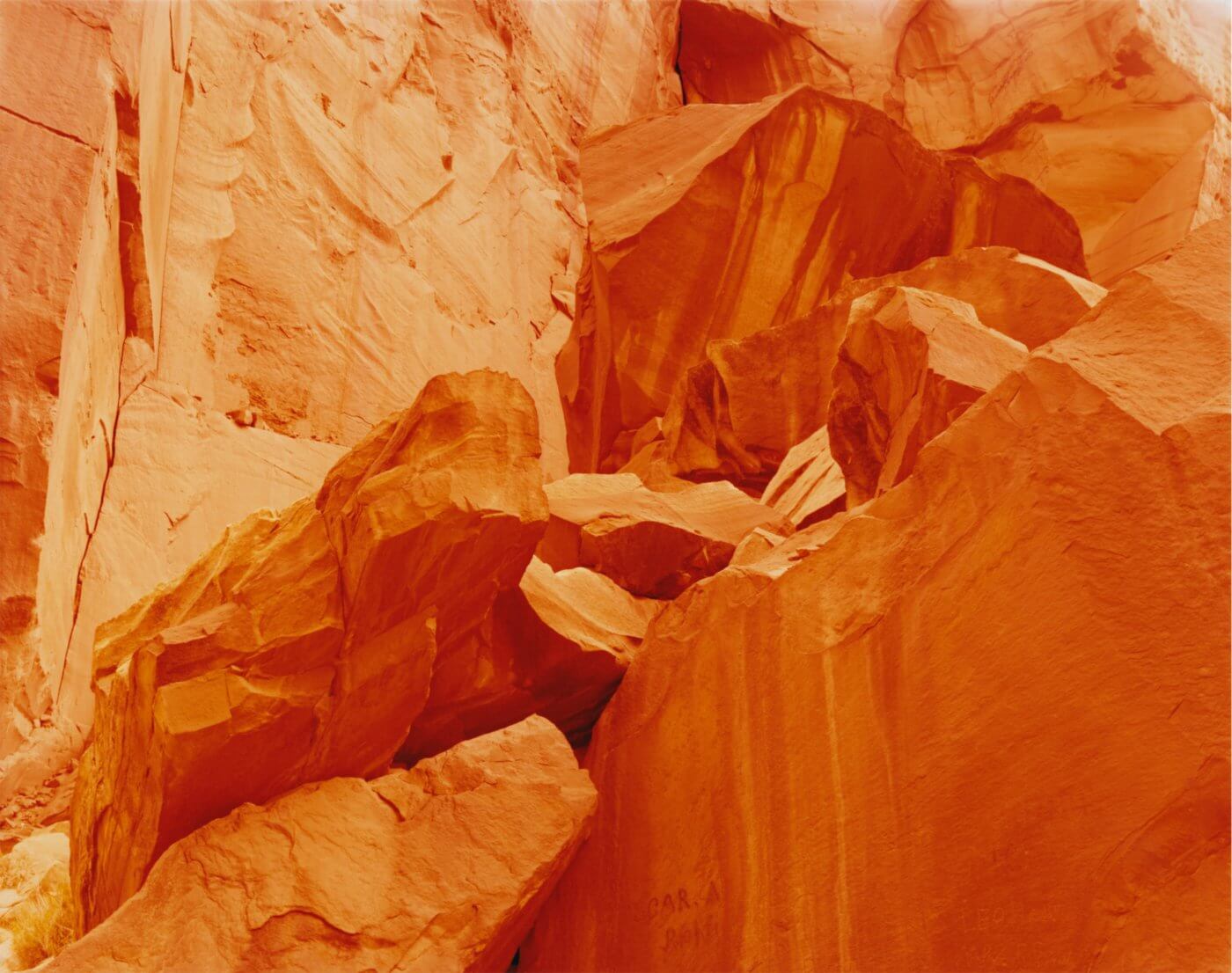
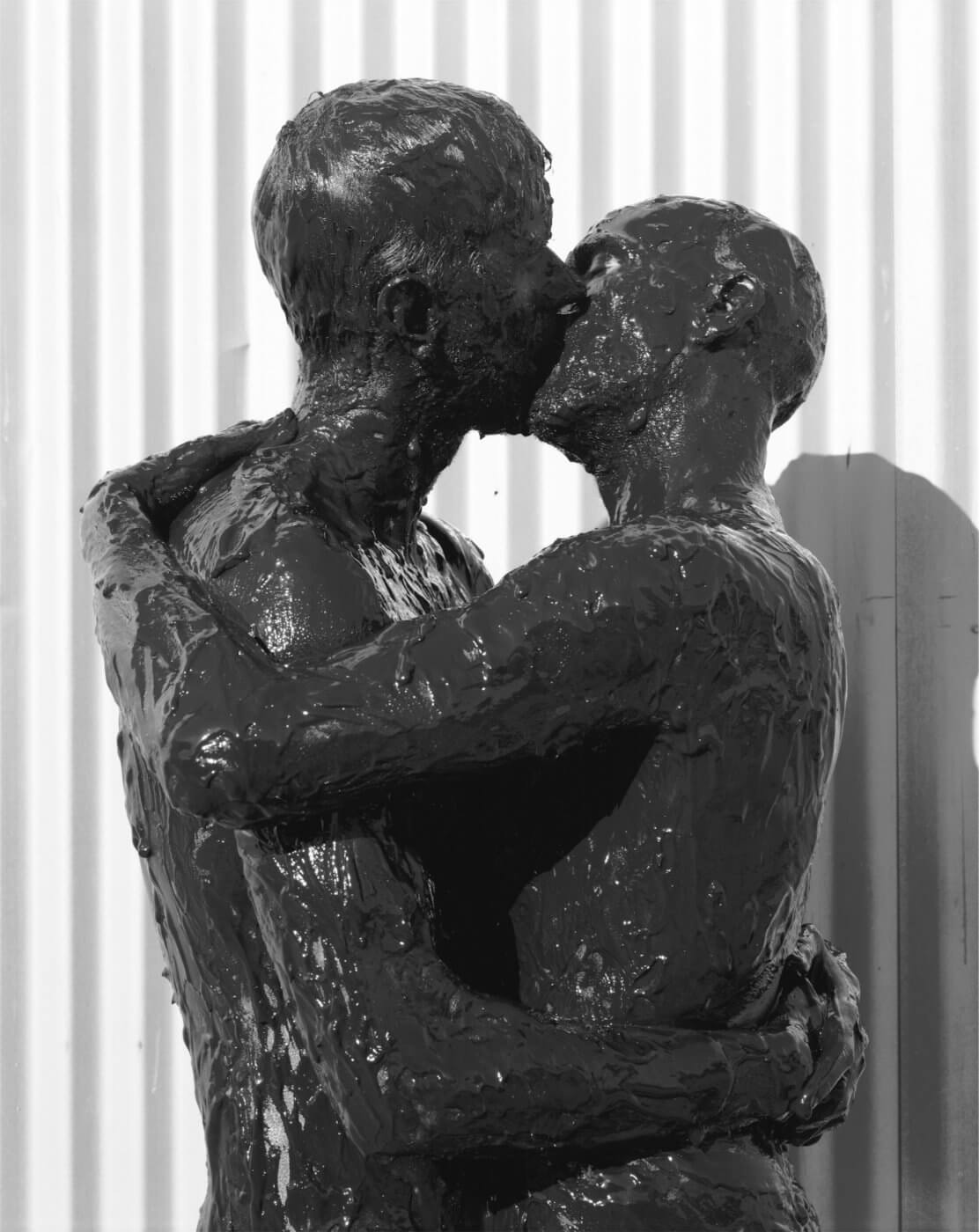
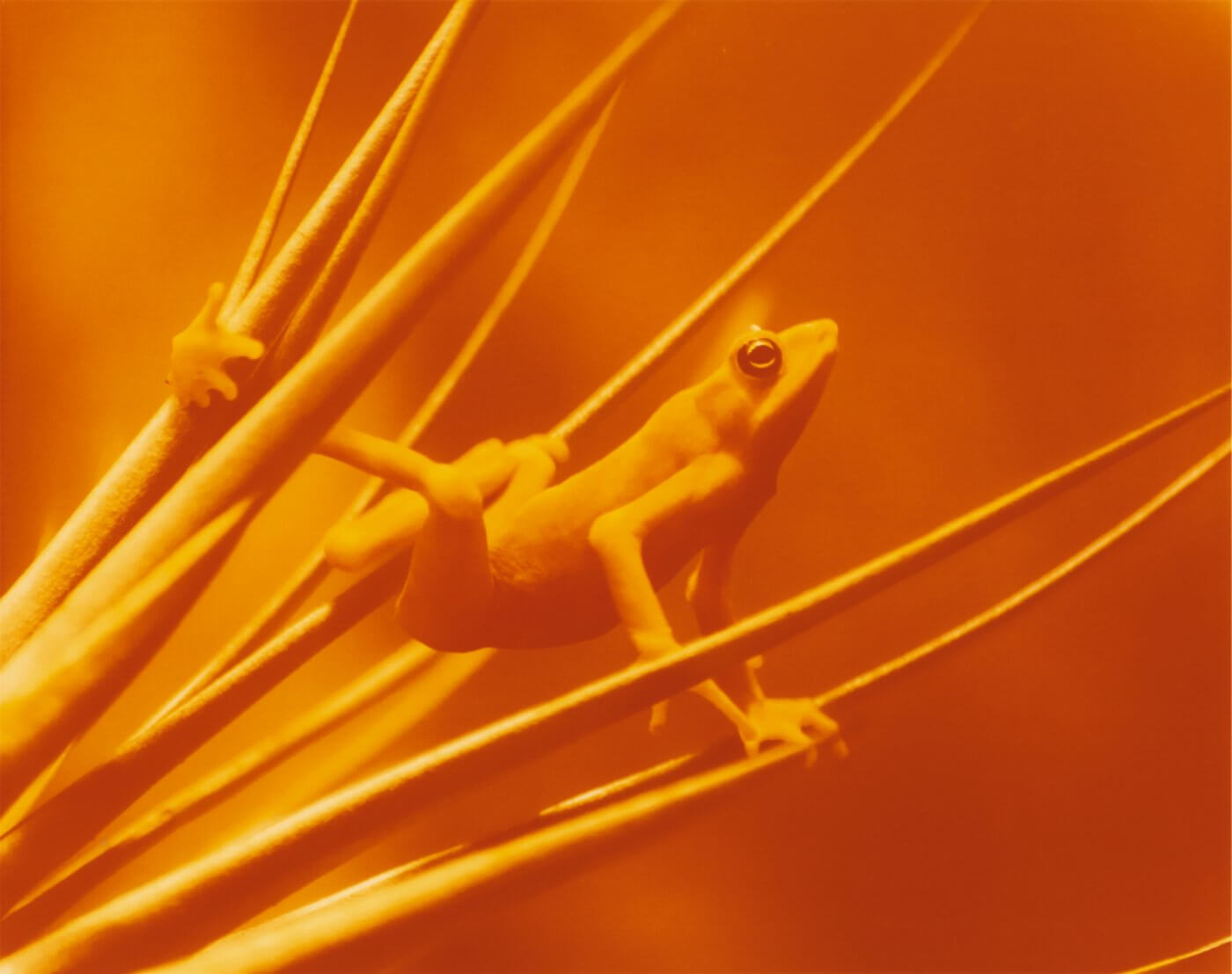
In the current Spring issue of Aperture’s PhotoBookReview Sherry writes:
Traversing America as a queer person, camera in hand, in search of meaning and metaphor in our troubled landscape has a certain weight to bear. The road is lonely to begin with; add the juxtaposition of an outsider looking in and trying to navigate the suburban, rural, national park, state park, and campground cultures, all quintessentially heteronormative — it could be said the experience of seeing is heightened, the isolation stronger, and maybe the desire, the connections between nature more dramatic, and maybe to be loved or connect with others even more intense, because you’re constantly made aware of your otherness. I’ve often found the strength to pursue this line of work from the varied books of American photographers that line my shelves, though few queer one come to mind, with the exception of Minor White and specifically his Rites & Passages. […] His work is proof to me that magic is real in the world; queerness is power and the camera can be a tool used to harness the energy. [20]
This quote refers not only to Sherry’s sources of inspiration, but also to the fact that he perceives national parks in the American west through his gay eyes and in his recognition of the ways in which climate change influences his ability to appreciate the natural environments around him. In doing so, Sherry’s photographs demonstrate a specific kind a sensibility that the queer-feminist environmental cultural studies scholar Catriona Mortimer-Sandilands calls a “queer ecological sensibility.” Mortimer-Sandilands establishes this concept in the context of Jan Zita Grover’s 1997 memoir North Enough, claiming that “she focuses on dimensions of her experience born in the specific history of a queer community, and uses the resulting emotional resonances and conceptual links to live in nature in a way that reflects this queer experience.” [21] The same can be said for Climate Vortex Sutra in which Sherry uses his own experiences as a gay men with America’s national parks, climate change, and environmental destruction to create eco-queer informed photographic work that critically engages with the history and present-day devastating effects of climate change and environmental destruction in national parks of the American West.
Because landscape photography is placed next to photographs of human and non-human beings, it seems like the artist wants to emphasize the interconnectedness between discourses on nature and the embodied politics of sexuality and gender. It is precisely through this juxtaposition that Sherry manages to challenge the heteronormativity of mainstream American environmental ethics and politics. For example, the pairing of female homoeroticism with a close-up of rock formations in Center of the Vortex (Rachel and A.L. Steiner) (2014) not only troubles conceptional divisions and core dualisms between body and environment; it also marks national parks as queer spaces (Fig. 20). Even though ‘wilderness’ is mostly attached to performance of heterosexual masculinity, queer history shows that ‘wilderness’ has always been a space for homoerotic possibility. At the turn of the 20th century, the ‘western wilderness’ was a space heavily dominated by communities of men — such as prospectors, cowboys, ranchers, or foresters — who frequently engaged in homosexual activity. As the research conducted by the sexologist Alfred Kinsey demonstrates: In the 19th century, there was more same-sex sexual activity among men in the remote wilderness than there was in the cities. [22] In addition, there is a long tradition, the pastoral literary tradition going back to ancient Greece, of a positive and conscious linkage between same-sex eroticism and rural or ‘wilderness’ environments. [23]
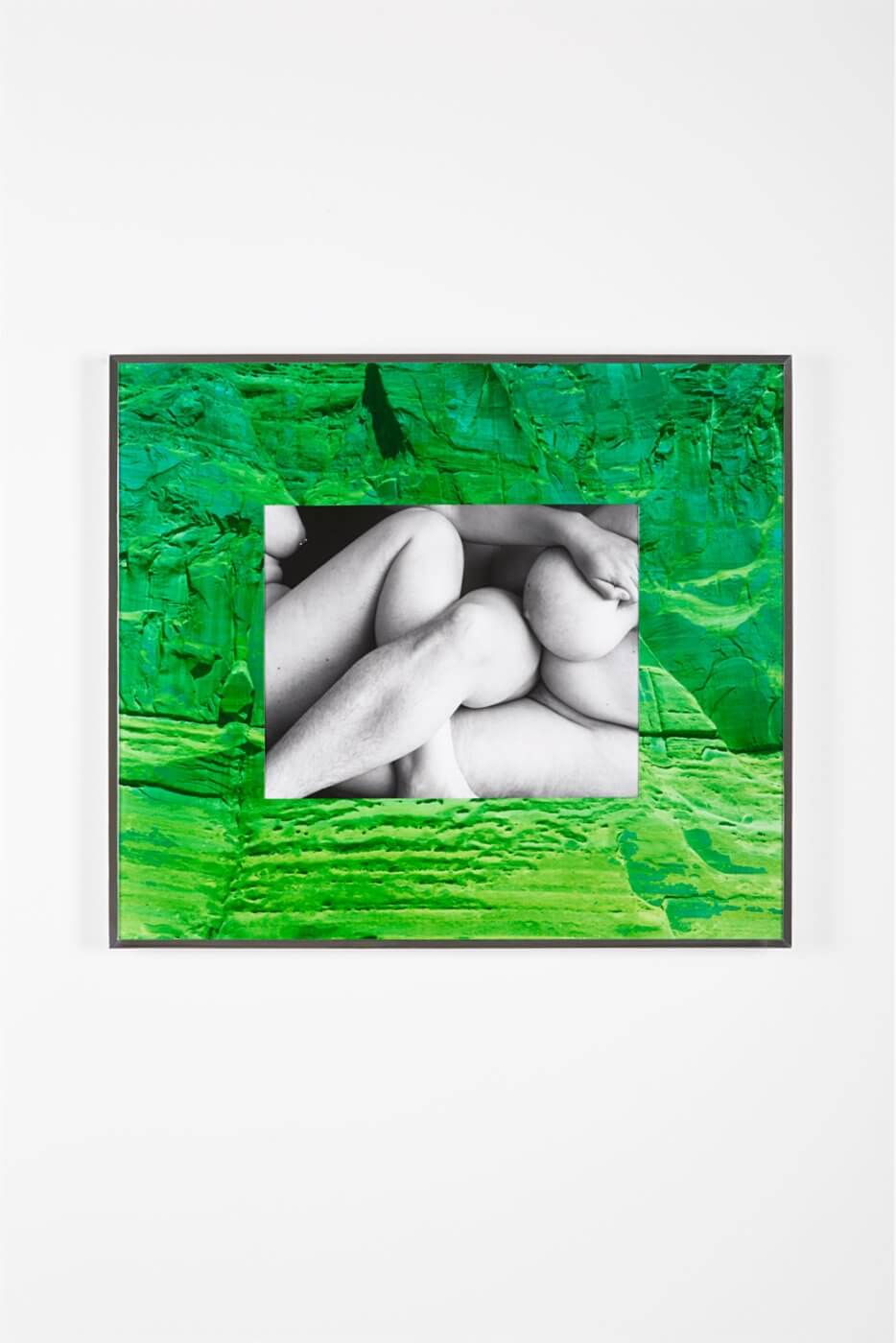
The juxtaposition also offers new modes of theorizing human/more-than-human relationships. Climate Vortex Sutra shows us what ethics might look like when agency is understood — as suggested by queer ecology — as a product or feature of connectivity between humans, and between humans and non-human materiality, [24] as opposed to how it is traditionally understood: namely as an aspect of autonomy and independence. [25] By providing us with a specific futuristic vision of queer community that takes care of their environment and feels deeply connected with it, Climate Vortex Sutra is not only about climate impacts, but also about climate solutions.
4_Resignification and Radical Ambiguity
All these tools — the vibrant colors, the titles with references, and the juxtaposition — work together in Climate Vortex Sutra as a queer strategy of resignification. Resignification describes a process in which signs are re-evaluated and re-/decontextualized. [26] By breaking with predominant meanings, a performative force can evolve and subversively expose the uncertainty of standardized meanings. In the case of Sherry’s photo series, the strategy of resignification helps him to bring forward a reverse discourse: Through the expropriation of an authorized discourse, that is the andro- and hetero-centric tradition of American landscapes in the West, Sherry’s visual counternarrative subverts and transforms heteronormative nature relations. In doing so, he calls into question not only the (straight, largely cis-male, modernist) canon of photography but also that the ‘rural’ and ‘wilderness’ are spaces free from the taint of queer activity.
A direct consequence of this queer-visual strategy of resignification is the symbolic rearrangement and devastation of a hegemonic regime of representation, such as that of US landscape photography, with its andro- and hetero-centric historical coloration. What emerges from this are moments of radical ambiguity [27] that attempt to push forward other ways of thinking. As the recipient, I am forced to raise questions about how I know what I perceive and therefore might overcome my routine response and begin to see differently. This queer tactic of radical ambiguity is critically important to free environmental photography from the principles of duty and literal description that have governed it since the outset. [28] It is equally important for greater receptiveness of the potential of an ‘eco-queer imaginary’ — an imaginary that instead of providing definitive answers to climate change issues offers tools for reflection, discussion, awareness, and action. These lead to new ways of thinking about and of being in the world.
5_Conclusion
As I have shown in Climate Vortex Sutra, embodiment, difference, imagination, and environment intersect with discussions on climate change. It is through the queer strategy of resignification that Sherry’s photographs criticize the Western American landscape tradition along with its andro- and hetero-centric power relations between gender, sexuality, desire, and nature. Equipped with an ‘eco-queer sensibility,’ Sherry’s photographs ask for environmental ethics in which agency is understood as a product of (inter-)connectivity between humans, animals, and other (non-human and non-animal) materiality. With its plea for interconnectedness and intercorporeality, Climate Vortex Sutra asks for more structural responses ranging from community-based to ethical concerns, rather than foregrounding ideas about the individuals’ responsibility, and therefore for a place, a promise, that has not yet been.
_How to cite
Oliver Klaassen. “A Radical-Ambiguous (Re-)Vision of America’s West: David Benjamin Sherry’s Eco-Queer Critique of America’s Changing National Parks in his Photo Series Climate Vortex Sutra (2014).” On_Culture: The Open Journal for the Study of Culture 7 (2019). <http://geb.uni-giessen.de/geb/volltexte/2019/14770/>.

_Endnotes
- [1] The following essay is a shortened and preliminary version of a chapter out of my dissertation project. I recently started to develop an ecological perspective on Sherry’s photographic work in the course of the conference Territories that Matter: Gender, Art and Ecology (Nov. 23–24, 2018 / Universidad Autónoma de Madrid & Huesca Convention Center, Spain), where I gave a lecture on ‘A PLACE, PROMISE, THAT HAS NOT YET BEEN’ Queer Environmental Ethics in David Benjamin Sherry’s Climate Vortex Sutra (2014). I would like to take this opportunity to express my sincere thanks for the constructive feedback on my ecologically queer reading of Sherry’s photographic work I have received so far from many people in different academic contexts. My special thanks go to Prof. Dr. Ansgar Schnurr, Teona Micevska, and Kendall Kartal, who supported me with their valuable feedback in the process of writing and translating this essay.
- [2] The overall aim of a queer reading as a theoretical and methodological approach for analyzing visual art is to find out to what extent the visual material to be examined intervenes in normative discourses of sexuality, gender, and desire. Importantly, queer readings are not about claiming the sexuality of others. Rather, they are about enjoying the queerness that may or may not have been intentionally part of the text (including visual art). Because a queer reading favors multiple points of view, including the detection of contradictions and the deviation from social agreements, it hardly needs mentioning that my interpretation manifests itself in the selected photo series Climate Vortex Sutra (2014) by David Benjamin Sherry, in which associations and contents are evoked, not as fixed and stable givens, but as ephemeral practices, dependent on the situation-based reception of my own person. Consequently, it is my aim to produce ambivalences instead of smoothing them out into a reductionist interpretation. Contrary to the assumption that queer readings are ‘reading too much into things,’ they merely reinforce that all texts (including visual art) must be ‘read’ and interpreted, and that meaning-making is an active process that draws on a variety of semiotic structures.
- [3] I am using queer as research perspective as well as a starting point for the critical analysis of visual material in order to avoid the danger of emptying the term of its political charge and encouraging its de-politicization. Originally used as a homophobic term for abuse in the late 1980s and early 1990s, “queer” was positively picked up by LGBT*QQI*P activists as a counter-concept to heteronormativity and has since then served as an affirmative mode of self-reflection. The initialism LGBT*QQI*P stands for people who identify themselves as lesbian, gay, bisexual, trans*, queer, questioning, inter*, and pansexual. Looking from the perspective of the history of science, since the early 1990s queer studies has emerged from discourse analysis, poststructuralism, and feminist theories. It has been positioned as an opposite and reconceptualization of gay and lesbian studies and as such, queer theory has been developed as a critical and political concept and a field of research. Queer studies focus on diversified society and critique fixed and stable identities. Deconstruction, (un)doing gender, queering, performativity, and representation are among the most important concepts. More details on the topic of queer studies as field of research can be found among others in Donald E. Hall et. al., ed., The Routledge Queer Studies Reader (London/New York: Routledge, 2013).
- [4] For an introduction into queer ecology as field of research, see among others Catriona Mortimer-Sandilands and Bruce Erickson, eds., Queer Ecologies: Sex, Nature, Politics, Desire (Bloomington/Indianapolis: Indiana University Press, 2010) (hereafter abbreviated as ‘Mortimer-Sandilands & Erickson 2010’); UnderCurrents — Journal of Critical Environmental Studies 19 (2015), accessed February 25, 2019, <https://currents.journals.yorku.ca/index.php/currents/article/view/40271/36068>.
- [5] For further discussion of this problem, see Catriona Mortimer-Sandilands, “Unnatural Passions? Notes Toward a Queer Ecology,” in Invisible Culture — An Electronic Journal for Visual Culture 9 (2005), accessed January 10, 2019, <https://www.rochester.edu/in_visible_culture/Issue_9/issue9_sandilands.pdf> (hereafter abbreviated as ‘Mortimer-Sandilands 2005’).
- [6] From a constructivist point of view, I understand ‘landscape’ as a set of expectations and beliefs about the environment and the conventions of its representations we project upon the world. And these conventions and expectations are subject to historical change and are culturally specific.
- [7] In the late 16th century, the Dutch first coined the term ‘landscape’ (lantscap), a description of a type of picture that features naturalistic-looking scenery.
- [8] With ‘wilderness’ I mean spaces such as national parks in the American West which came to be valued as sites to be preserved from the corrupting influences of urban industrial modernity, and in particular, as places where new ideals of whiteness, masculinity, and virility could be explored away from the influence of emancipated women, immigrants, and degenerate homosexuals. Therefore, ‘wilderness’ — especially in the context of the American imagination — is highly racist, gendered, and sexualized. See Mortimer-Sandilands & Erickson 2010, 14; Deborah Bright, “Of Mother Nature and Marlboro Men: An Inquiry Into the Cultural Meanings of Landscape Photography,” in The Contest of Meaning: Critical Histories of Photography, ed. Richard Bolton (Cambridge, MA: MIT Press, 1989), 125–142 (hereafter abbreviated as ‘Bright 1989’); Colin Fisher, “Race and US Environmental History,” in A Companion to American Environmental History, ed. Douglas Cazaux Sackman (Chichester, West Sussex/Malden, MA: Wiley-Blackwell, 2010), 97–115; Susan R. Schrepfer and Douglas Cazaux Sackman, “Gender,” in A Companion to American Environmental History, ed. Douglas Cazaux Sackman (Chichester, West Sussex/Malden, MA: Wiley-Blackwell, 2010), 116–145; Philip Burnham, Indian Country, God’s Country: Native Americans and the National Parks (Washington, D.C.: Island Press, 2000) (hereafter abbreviated as ‘Burnham 2000’).
- [9] See Douglas Nickel, “Photography, Perception, and the Landscape,” in America in View: Landscape Photography 1865 to Now, ed. Rhode Island School of Design Museum of Art (Rhode Island: Meridian Printing, 2012), 15 (hereafter abbreviated as ‘Nickel 2012’).
- [10] See Angela L. Miller, “The Fate of Wilderness in American Landscape Art: The Dilemmas of Nature’s Nation,” in A Keener Perception: Ecocritical Studies in American Art History, ed. Alan C. Braddock and Christoph Irmscher (Tuscaloosa: The University of Alabama Press, 2009), 85–109 (hereafter abbreviated as ‘Miller 2009’).
- [11] For a good introductory and critical text on the ambivalences of American landscape art, see Miller 2009; Linda S. Ferber and New-York Historical Society, The Hudson River School: Nature and the American Vision (New York: Skira Rizzoli, 2009).
- [12] See Nickel 2012, 20. For a short introduction into the historical interdependence of photography and US-American national parks, see Jamie M. Allen, “Photography and America’s National Parks: An Intertwined History,” in Picturing America’s National Parks, ed. Jamie M. Allen (New York: Aperture, 2016), 8–17. For further discussion on American landscape and wilderness photography, see Rod Giblett and Juha Tolonen, Photography and Landscape (Chicago, IL: Intellect/The University of Chicago Press, 2012), 69–42.
- [13] See Bernard DeVoto, “The West: A Plundered Province,” in Harper’s Monthly Magazine 169 (1934), 335–364.
- [14] For further discussion of the linkages between national parks and the often-violent erasure of native histories, see most importantly Burnham 2000; Rebecca Solnit, Savage Dreams: A Journey into the Landscape Wars of the American West (Berkeley: University of California Press, 1999).
- [15] Whereas the highly gendered concepts of the ‘beautiful’ and the ‘sublime’ go back to the Irish philosopher Edmund Burke (see Edmund Burke, A Philosophical Enquiry into the Origin of our Ideas of the Sublime and Beautiful (Dublin: Graisberry and Campbell, 1779), ‘picturesque’ is a third category and an extensions of Burke’s landscape theory by Rev. William Gilpin (see William Gilpin, Essays on Prints [London: R. Blamire, 1794]).
- [16] The feminist photo theoretician Deborah Bright investigates the ecological, economic, and gendered conditions of landscape photography that are deeply connected with a white, heterosexual, and cis-male gaze. See Bright 1989.
- [17] Emily Manning, “David Benjamin Sherry Is Reshaping How We See the American Landscape,” (2014), accessed June 10, 2019, <https://i-d.vice.com/en_us/article/7xvb7z/david-benjamin-sherry-is-reshaping-how-we-see-the-american-landscape>.
- [18] This essay’s underlying understanding of the intersection between politics and aesthetics is based on a foundation of semiotics (e.g. after the theorists Umberto Eco, Jean Baudrillard, and Roland Barthes), according to which political opposition can be realized by attacking the symbolic order through the alienation of existing signs. See Umberto Eco, “Für eine semiologische Guerilla,” in: Über Gott und die Welt: Essays und Glossen, Umberto Eco (München: Karl Hanser Verlag, 1985), 146–156; Jean Baudrillard, Der symbolische Tausch und der Tod (Berlin: Matthes & Seitz, 1978); Roland Barthes, Sade, Fourier, Loyola (Berlin: Suhrkamp, 1986), 141.
- [19] It should be noted that by choosing the initialism LGBT+, I am seeking to not only simplify things but also to be open to a plurality of sexualities, and I am hoping to contribute to the social and artistic recognition of people who form part of and identify with these communities.
- [20] See Brendan Embser and Matthew Leifheit, “These Queer PhotoBooks Changed my Life: Featuring contributions by Horace D. Ballrd, Joan E. Biren, Deborah Bright, Shannon Ebner, Philip Gefter, Laura Guy, Jonathan D. Katz, Kayode Ojo, David Benjamin Sherry, Ka-Man Tse, and Timothy Young,” in The PhotoBook Review 16 (2019), 24–26, here 26.
- [21] Mortimer-Sandilands 2005.
- [22] See Mortimer-Sandilands and Erickson 2010, 15.
- [23] For an introduction into the long history of pastoral depictions as a tradition of representation that resists the normative paring of nature with heterosexuality, see Catriona Mortimer-Sandilands and Bruce Erikson, “Introduction: A Genealogy of Queer Ecologies,” in Queer Ecologies: Sex, Nature, Politics, Desire, ed. Catriona Mortimer-Sandilands and Bruce Erikson (Bloomington/Indianapolis: Indiana University Press, 2010), 1–50.
- [24] As Michael J. Morris puts it eloquently: “To queer ecology, then, is to extend the critical intervention of ‘queer’ towards expanding what becomes livable for both the human and nonhuman, precisely in their relational interconnectedness.” Michael J. Morris, in Jull E. Anderson et. al., “Queer Ecology: A Roundtable Discussion,” in European Journal of Ecopsychology 3 (2012), 90–91, accessed December 4, 2018, <http://eje.wyrdwise.com/v3/EJE%20v3_Anderson%20et%20al.pdf>.
- [25] The queer ecological thinker Catriona Sandilands also pleads for a “shared political desire” instead of an “epistemological or ontological position.” Catriona Sandilands, The Good-Natured Feminist: Ecofeminism and the Quest for Democracy (Minneapolis/London: University of Minnesota Press, 1999), 115. In other words: In order to affect change, it is important to leave politics of identity behind and to move towards a politics of affinity.
- [26] The idea of resignification as a queer survival strategy goes back to the question of how the discursive means with which one’s subjectivity is produced can be expropriated. For further discussion on this topic, see Judith Butler, Excitable Speech: A Politics of the Performative (New York: Routledge, 1997).
- [27] In my dissertation project Radically Ambiguous Politics of In_Visibilitties in Contemporary Queer Art Photography, I argue that ambiguities and political commitment are neither mutually exclusive nor inconsistent with one another. Ambiguities in the field of the arts and visual culture can be an empowering and protective tool for the LGBT+ community against surveillance, control, fixation, stigmatization, stereotypization, and discrimination — especially against the backdrop of paradoxical political developments in the so-called ‘Global North’ since the Stonewall uprising of 1969 in New York, such as the commercial, capitalist, and legal embrace of LGBT*Q+ culture and the rise of far-right nationalism with its attendant visible and violent classism, racism, xenophobia, homophobia, and sexism at least since 2000. For further information on “undisambiguity” (“VerUneindeutigung”) as a strategy of queer politics of representation, see Antke Engel, Wider die Eindeutigkeit: Sexualität und Geschlecht im Fokus queerer Politik der Repräsentation (Frankfurt, Main/New York: Campus Verlag, 2002). For a further discussion on the political potential of ambivalences and ambiguities in the field of art and visual culture, see Rachel Mader, ed., Radikal Ambivalent: Engagement und Verantwortung in den Künsten heute (Zürich/Berlin: Diaphanes, 2014).
- [28] For further discussion on climate change photography, see among others Bénédicte Ramade, “From Nature to the Anthropocene: The Mutations of Environmental Photography,” in The Edge of the Earth: Climate Change in Photography and Video, ed. Bénédicte Ramade (London: Black Dog Publishing, 2016), 11–27.


